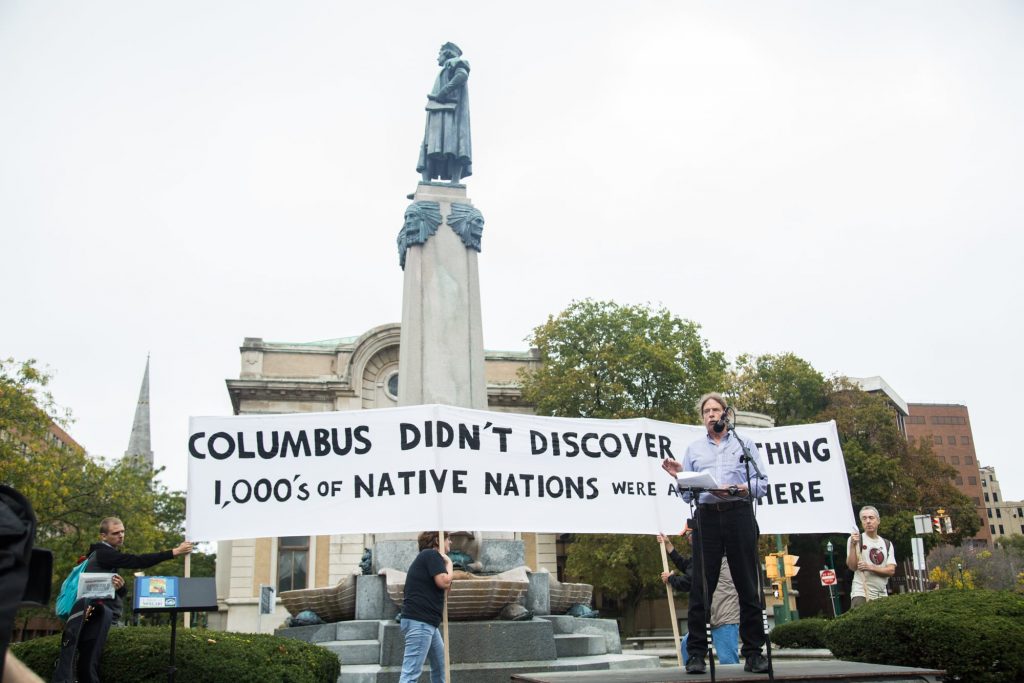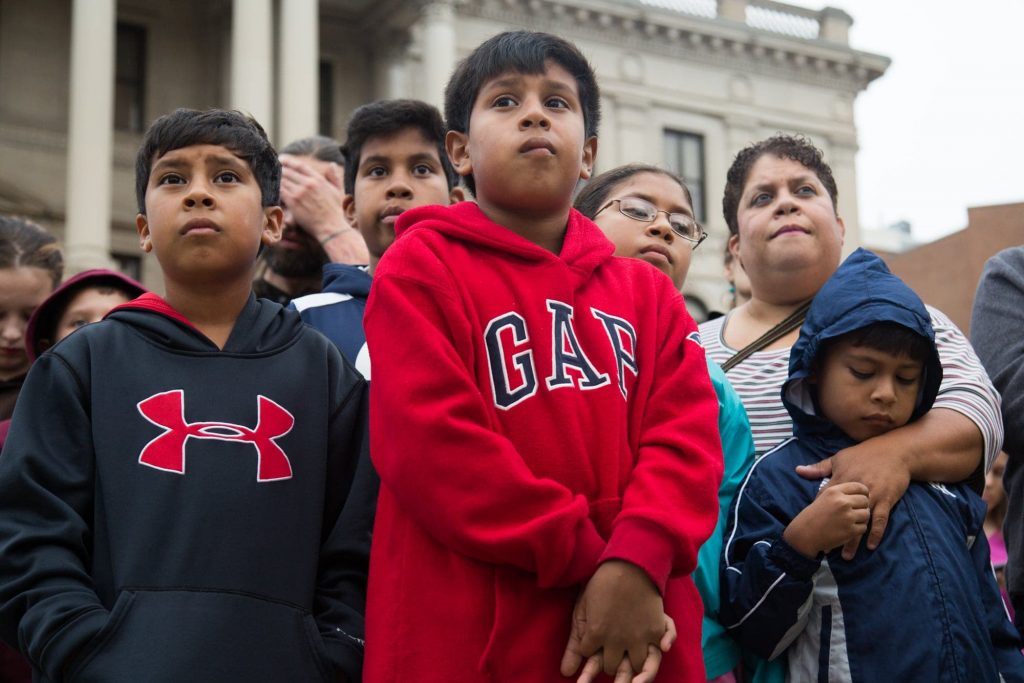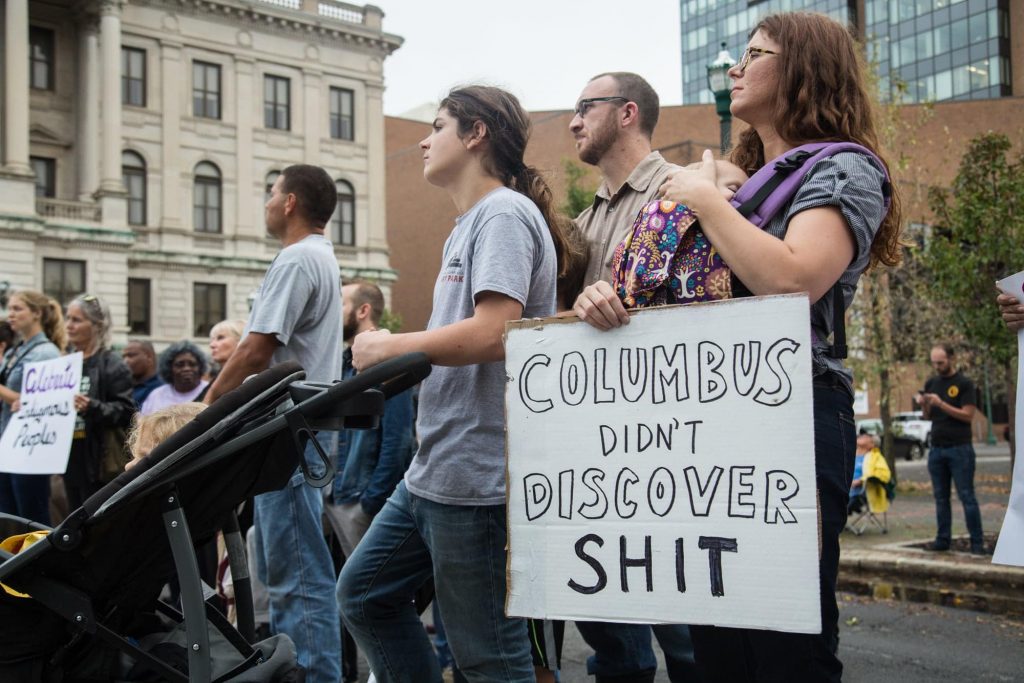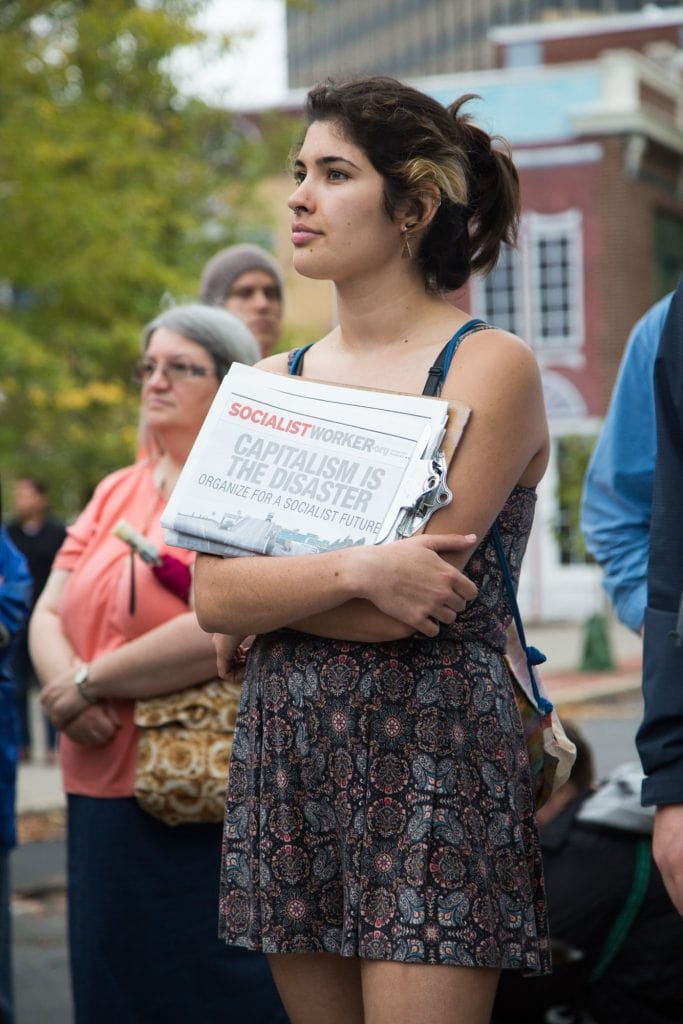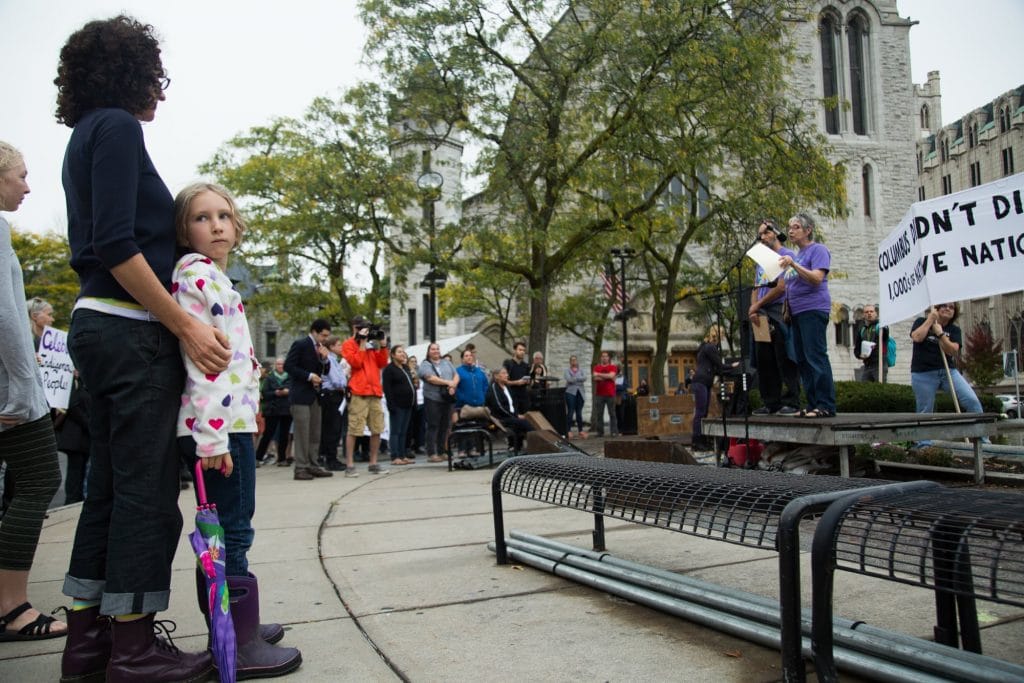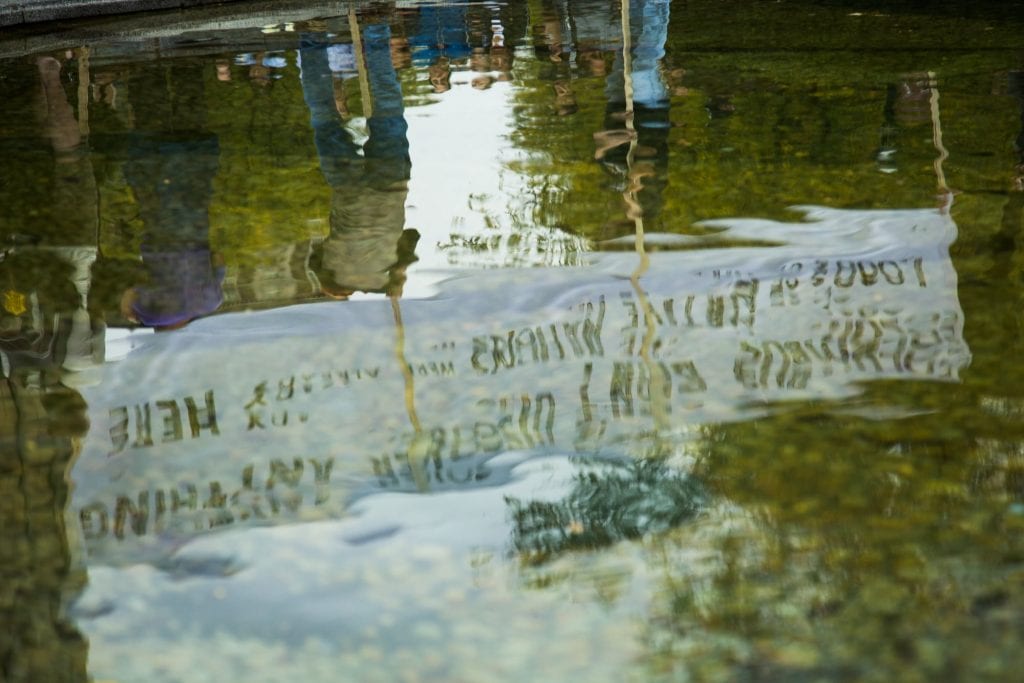Syracuse celebrates Indigenous Peoples Day
Syracuse celebrates Indigenous Peoples Day
In 1992, a State University of New York College of Environmental Science and Forestry freshman named Neil Patterson Jr. was sitting in his dorm when his roommate rushed in visibly upset. It was the 500th anniversary of Columbus arriving in South America and Patterson’s roommate had just witnessed students beating an effigy of Christopher Columbus hanging from a tree.
“He said, ‘Neil, I could totally understand you doing this, but why are they,’” Patterson recounted.
Patterson, a member of the Tuscarora nation, said he was conflicted about the situation. Twenty five years ago there were no native student organizations on campus, so he said it was nice to know there were native allies in Syracuse.
Today, Patterson is the assistant director of the Center for Native Peoples and the Environment at SUNY-ESF. Monday morning, he recited “Words That Come Before All Else,” an indigenous address, to kick-off Indigenous Peoples’ Day on campus.
Indigenous Peoples’ Day is a celebration of indigenous people and culture that aims to take the place of Columbus Day. Groups from Syracuse University, SUNY-ESF and the city of Syracuse held events on campus and in Columbus Circle in downtown Syracuse that began around 9:00 a.m. and lasted into the night. Many involved with the events said that Indigenous Peoples’ Day is an opportunity to educate the public about Native Americans and the true legacy of Christopher Columbus.
Patterson wore a purple ribbon shirt, a ceremonial Native American garment, and began by introducing the format of his speech. Patterson, in the Tuscarora language, said he would be giving thanks to people, Mother Earth, water, small plants, trees and the sky. After each segment, he asked the audience to signal they were aware of a coming together of minds.
The ceremony ended with a translation into English. Typically it is recited entirely in a native language, but Patterson said he felt that nobody could get anything out of it if he did not translate it.
“It’s a hybrid,” Patterson explained. “Fortunately, we’ve been hybridizers for years.”
A goal for Patterson and many of the other indigenous people manning events Monday is the rescinding of a 1493 papal bull called the “Doctrine of Discovery.” Written one year after Christopher Columbus landed in the Western Hemisphere, the order essentially allows the subjugation of all non-Christian people and the “discovery” or taking of their land. More than five centuries later, the bull still exists.
Columbus and his successors used the pope’s permission to systematically kill or enslave Native Americans and take their land. Some estimate that there were as many as 18 million Native Americans living in the United States before Columbus. An 1890 census listed just 250,000.
Columbus Day, to many, is a celebration of this subjugation. Last year, student groups including Indigenous Students at SU, successfully got both Syracuse University and SUNY-ESF to change Columbus Day to Indigenous Peoples’ Day. Today, at both campuses, university events are preceded by an acknowledgement that the schools are on Haudenosaunee land. The Haudenosaunee flag now flies next to the United States Flag at Hendrick’s Chapel.
Kacey Chopito, president of Indigenous Students at SU and a senior history and political science major, discovered his call to activism at Standing Rock, the location of the Dakota Access Pipeline protests.
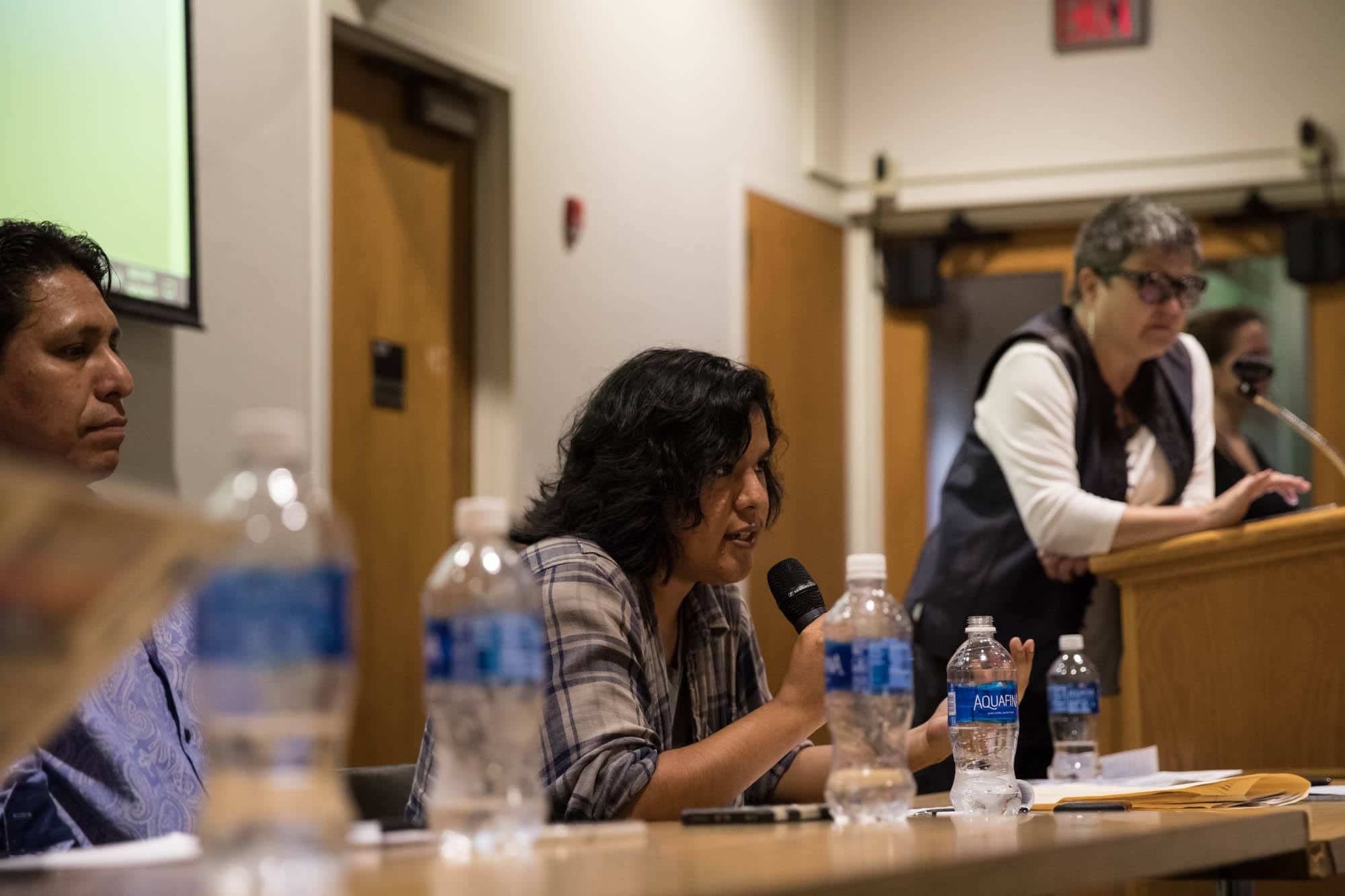
Chopito arrived in the camps late at night with several friends. It was well below freezing, he says, when security forces started to fire water cannons and rubber bullets at protesting Native Americans.
“I heard cries and screams all night,” Chopito recalls. “It was surreal. It still feels so real.”
Down the hill from Bray Hall outside the Schine Student Center, Chopito and other indigenous students manned a table. Strong wind and rain made it hard to keep signs on stands and flyers. But, Chopito said, the rain brought students and touring families seeking shelter.
Other students manning the table said that they had experienced micro-aggressions on campus. They felt that having conversations with people might prevent those kinds of interactions.
“I can’t tell you how many times I’ve been asked, ‘Do you live in a Teepee?’” Skye Wiegmans exclaimed.
Chopito also spoke at two other events between his classes that afternoon and evening. The first, a rally organized by the Neighbors of the Onondaga Nation, attracted 35,000 people’s interest on Facebook and had well over 100 people in attendance.
The event took place downtown in Columbus Circle and featured speakers, poets and musicians who all spoke about the importance of being an ally to indigenous people. In the background of the stage loomed a large statue of Christopher Columbus standing on the heads of native people. The monument was shipped to Syracuse in 1932 by Benito Mussolini’s government and paid for by Italian-American citizens. It once stood for Italian immigrants integrating into American society, but on Monday it was gestured to as a sign of institutional racism.
After that event, Chopito headed back to main campus for a panel sponsored by the International Socialist Organization and Indigenous Students at Syracuse. Panelists presented on struggles that indigenous people face and the many forms colonialism takes today.
“The federal government wants us gone,” Chopito said. “I’m not talking about 1816. I’m talking about 2016 and 2017. I’m talking about Standing Rock.”
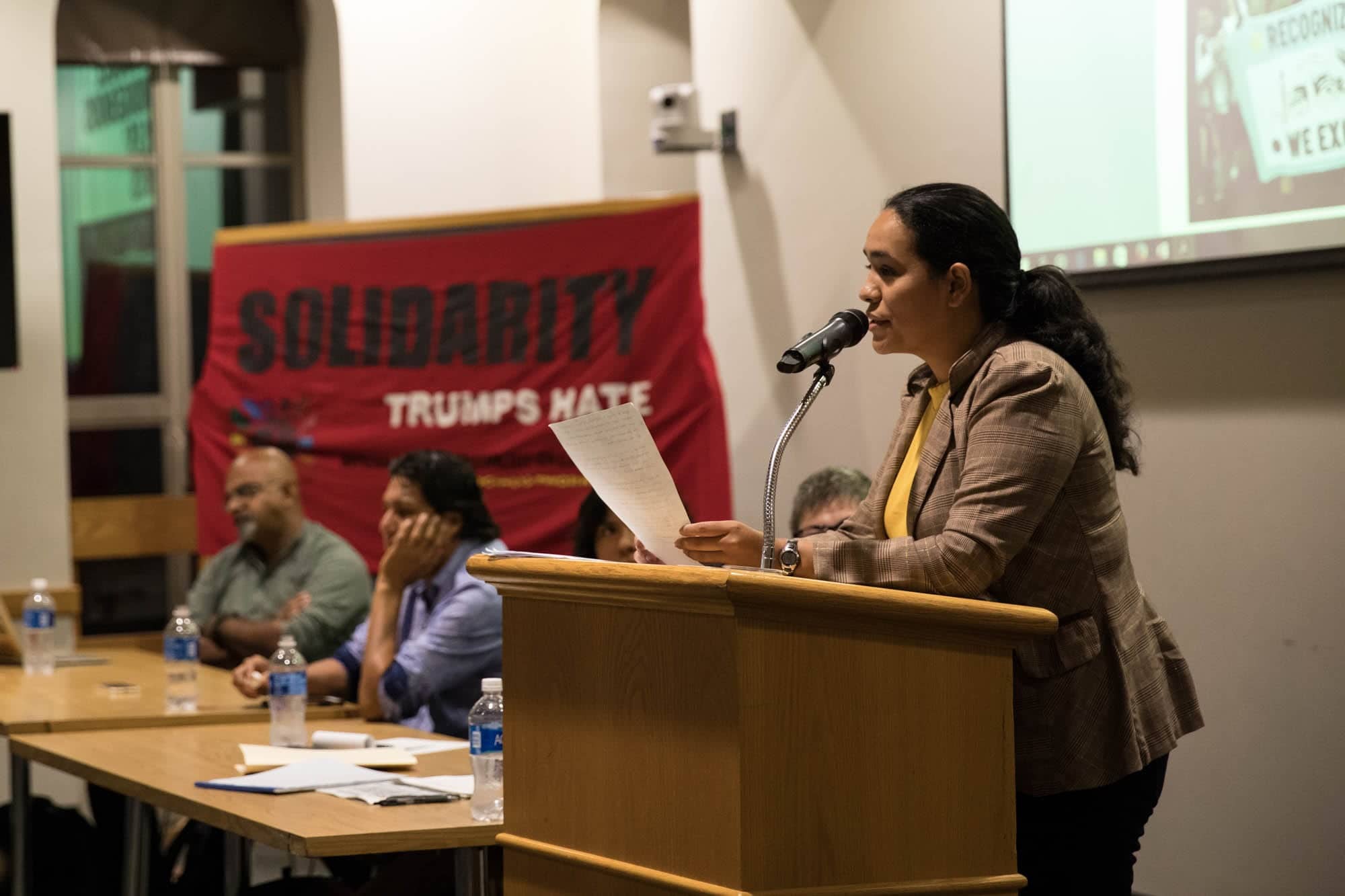
The next step, speakers said at events throughout the day, is a wider recognition of Indigenous Peoples’ Day. Students at Henninger High School have brought the issue to the Syracuse Board of Education, which is scheduled to vote Wednesday on the issue. Petitions circulated to have the City of Syracuse and New York state replace Columbus Day with Indigenous Students Day. With wider understanding and outreach the narrative that glorifies colonialism might one day change.

